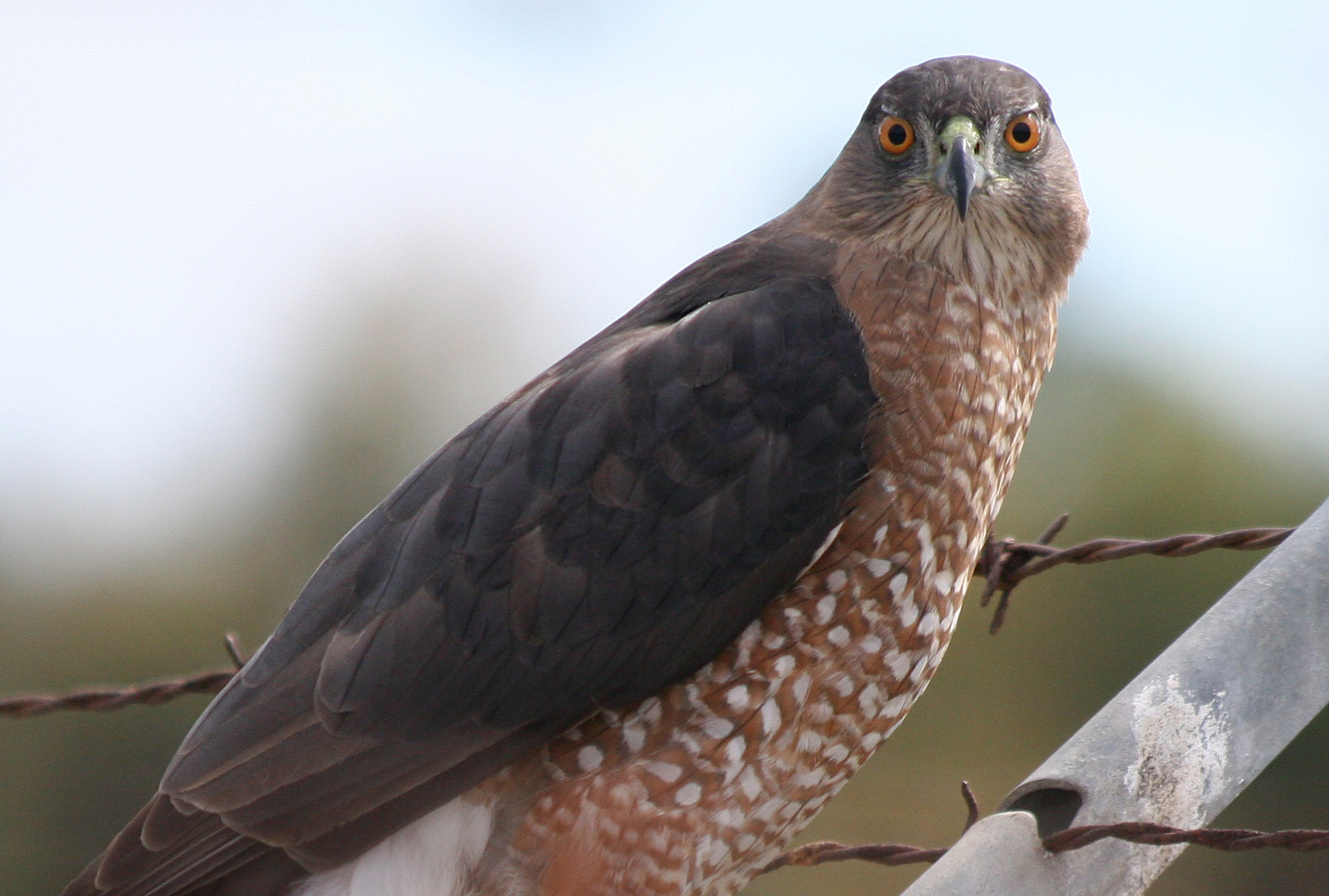Cooper's hawk
(Accipiter cooperii)

Description
Accipiter cooperii, commonly known as the Cooper's hawk, is a medium-sized bird of prey found in North America. The species was first described by Charles Bonaparte in 1828 and is named after William Cooper, an American naturalist. Physical Description: The Cooper's hawk has a compact body, short wings, and a long tail. Males are smaller than females, with a length of 14-16 inches and a wingspan of 27-35 inches. Females, on the other hand, are larger, with a length of 16-20 inches and a wingspan of 31-37 inches. The bird's plumage is blue-gray on the back, with white underparts that are heavily streaked with brown. Their eyes are bright orange, and their legs and feet are yellow. Habitat and Range: Cooper's hawks can be found in a variety of habitats, including forests, woodlands, and suburban areas with mature trees. They are found throughout North America, from southern Canada to northern Mexico. The species is a resident bird in the southern part of its range but migratory in the north. During migration, Cooper's hawks can be seen in large numbers, particularly along the Great Lakes and the Gulf of Mexico. Diet: The Cooper's hawk is a bird of prey, and its diet consists mainly of other birds. They hunt by flying through trees and surprising their prey. Their primary targets are smaller birds, such as finches, sparrows, and doves, but they will also prey on larger birds such as woodpeckers and jays. Occasionally, they will eat small mammals, such as mice or squirrels. Behavior: Cooper's hawks are known for their agility and speed in flight. They are excellent fliers and can maneuver through dense forests with ease. They are also known for their ability to fly low to the ground, which allows them to surprise their prey. In addition, they are known for their distinctive "kik-kik-kik" call. Breeding: Cooper's hawks breed from March to August, with the breeding season peaking in May and June. They build their nests in trees, typically 25-50 feet above the ground. The nests are made of sticks and lined with leaves, bark, and other soft materials. The female lays 2-6 eggs, which she incubates for 32-36 days. The chicks hatch in May or June and fledge after 27-34 days. Conservation Status: The Cooper's hawk is listed as a species of Least Concern by the International Union for Conservation of Nature (IUCN). The species was once heavily persecuted by humans, particularly during the mid-20th century when they were seen as a threat to game bird populations. However, populations have rebounded in recent years, and the species is now widespread throughout its range. Conclusion: In conclusion, the Cooper's hawk is a fascinating bird of prey that is found throughout North America. With their distinctive blue-gray plumage, bright orange eyes, and powerful flight, they are a sight to behold. Their diet consists mainly of other birds, and they are known for their agility and speed in flight. Although they were once heavily persecuted by humans, their populations have rebounded in recent years, and they are now considered a species of Least Concern.
Taxonomic tree:







